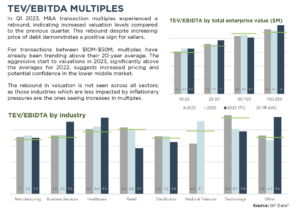Address Culture Conflict Before a Sale
As an owner, one way to maximize value in your business is to demonstrate that you’re not the smartest person in the room. In an ideal state, you work yourself out of a job, moving on to an advisory role while your management team runs day-to-day operations.
With that said, it’s equally important that your goals and values are in sync with your managers’. When selling a business, you want to show buyers a positive work culture in which team members work well together and make each other better.
Over the years, we’ve seen gifted people who are very good at doing their technical jobs, but who are either poor managers or don’t get along with ownership. As an owner, that’s a tough position to be in. Do you accept the conflict if the business is continuing to make money, or do you replace management in hopes of finding a better personality fit?
If you find yourself in that scenario, you have a couple of options. You can replace management, you can try to fix the culture issues, or you can go into a sale process being upfront about team dynamics.
The first option, replacing management, could be difficult as the talent market tightens. Moreover, you should try to complete any key staff changes at least a year before you go to market. (Keep this is mind if your management team is nearing retirement as well. You don’t want to lose all your key leaders right at the time you yourself want to exit the business.)
The second option is to address the cultural issues with your existing team. You might start by looking at your own leadership style by working with an executive coach. Or, bring in a consultant like SM Advisors or Initiative One to address team issues. Some outside perspective and consensus-building can go a long way toward building a shared vision.
Finally, you can go to market, acknowledging that team dynamics are a weak spot for your business. It’s very tough to hide in-fighting—conflict almost always come out during the sale process.
In this scenario, you might actively partner with management employees, positioning the sale as an opportunity to find new ownership that better fits their vision for the business. This is a wise route if management would be particularly hard to replace. Key employees who feel shortchanged or undervalued can chase away buyers, holding your deal hostage in exchange for a bigger salary, bonus structure, or even equity.
Alternately, you can work with potential buyers to pinpoint personality misfits that a buyer could better fill with their own people. If your team is dysfunctional but profitable, some buyers will see that as an opportunity to grow even more, once team dynamics have been addressed.
For advice on exit planning or selling a business, contact Al Statz, CEO of Exit Strategies Group, Inc., at alstatz@exitstrategiesgroup.com. Exit Strategies Group is a partner in the Cornerstone International Alliance.







